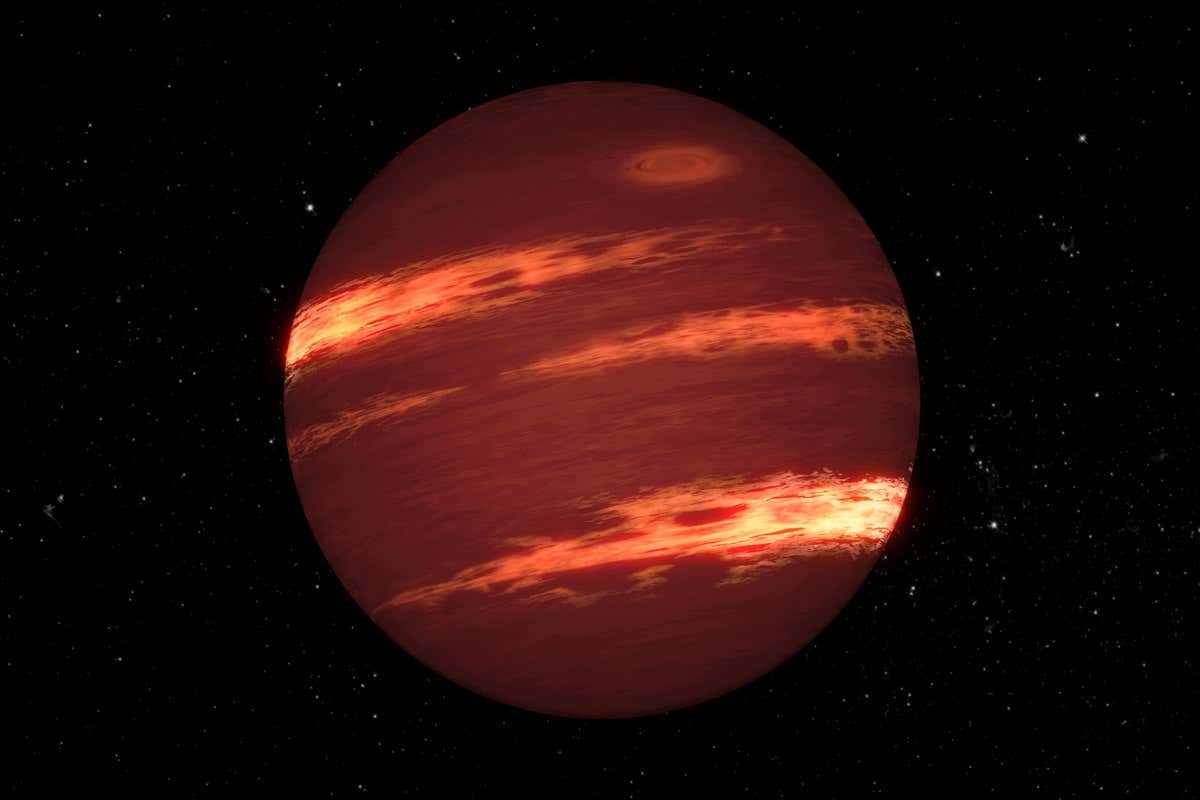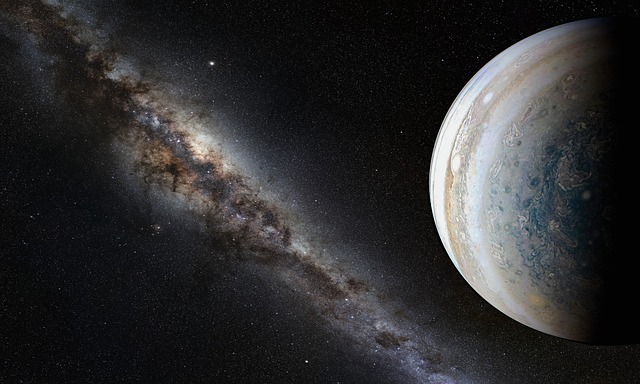*This post may contain affiliate links. This means we may make a commission if you purchase an item using one of our links*
Jupiter and brown dwarfs have a lot more in common than most celestial entities would, so much so some continue to believe that Jupiter was once a brown dwarf star in the past. Reality is obviously far different from this as the two operate distinctly from one another.
In regards to the similarities, both can be roughly the same in size with brown dwarfs around 0.7 – 1.4 times the size of Jupiter, both have horizontal cloud bands across their atmosphere and both are made mostly of hydrogen and helium. As for the differences, brown stars are able to emit light, are between 13 – 80 times larger in mass, are hotter and have a more significant influence on their surroundings due to their more powerful magnetic field.
Besides some of the more superficial physical similarities, brown dwarfs are formed to be very different from a planet as they’re often referred to as failed stars, therefore they’re bound to be more powerful, even if said planet is amongst the biggest a normal planet can be.
What Is A Brown Dwarf?
Table of Contents

The fate of a star is determined mainly by its mass. Every star is born of significant mass, which creates an immense amount of gravity (and heat) in its core. These temperatures ignite nuclear fusion, which allows the star to shine.
A brown dwarf is a star that is only a fraction the size of our sun. Astronomers often use Jupiter as a standard measure, and for stellar bodies with a mass of more than 13 Jupiter’s, there is sufficient energy within the core to spark a nuclear reaction.
This reaction involves burning deuterium – or heavy hydrogen – rather than the regular hydrogen that fully-fledged stars use. In order to burn ordinary hydrogen, a star needs a minimum mass of 80 Jupiters. Anything that sits within these upper and lower limits can be considered a brown dwarf.
In essence, a brown dwarf is a stellar object that sits between the mass of a large planet and a small star with insufficient mass to sustain nuclear fusion. A brown dwarf can also be called a “failed star.”
From a distance, brown dwarfs may share a similar appearance to a red dwarf, but these latter stars fuse ordinary hydrogen, differentiating them from a brown dwarf.
Is Jupiter A Failed Star?
The short answer is no, Jupiter is not a failed star.
Some refer to Jupiter as a failed star because it’s compositionally similar to the Sun, among other stars that composed primarily of helium and hydrogen.
The Sun is around 27% helium and 71% hydrogen, while Jupiter is around 24% helium and 73% hydrogen. Despite this, the Sun is a star and Jupiter is not, which has lead many to believe that Jupiter is a failed star.
However, the reason the two are made up of similar elements is because they were both born from the same materials, with the Sun simply using and taking more of the material.
Furthermore, failed stars by definition contain more mass than Jupiter, can and do have fusion activity in their cores, generate heat, and emit light.
For Jupiter to even be considered a failed star, let alone be an actual star, it would need to be heavier than it is now. Jupiter also does not generate its own light which again is due to the lack of fusion activity, which is essential for any celestial objects ability to generate its own light source.
Why Is Jupiter Not Considered A Brown Dwarf?

First and foremost, it simply does not have enough mass to fall under the classification of a brown dwarf, with your typical brown dwarf around 0.013 solar masses or 13 Jupiter sized planets in weight, with even the smallest size still 10 times the mass of Jupiter.
That extra mass is necessary to allow the star to activate the nuclear energies to burn the elements in its core and produce its own light, unlike Jupiter or any other planets similar in size to it.
The ability to create light and huge amounts of electromagnetic radiation is what separates stars from planets therefore, as Jupiter cannot do either it cannot be considered a brown dwarf.
How Are Jupiter And Brown Dwarfs Similar
Jupiter and brown dwarfs aren’t significantly different when it comes to their size, with the typical brown dwarf roughly 15 – 20 percent larger than Jupiter.
With that being said some brown dwarfs are actually smaller than Jupiter so, it’s easy to assume a planet like Jupiter could be confused as a brown dwarf even if it doesn’t operate like a star. The size range of a brown dwarf will typically fall between 0.7 – 1.4 times the size of Jupiter.
Both brown dwarfs and Jupiter consist mostly of hydrogen gas and helium. Brown dwarfs are also similar in appearance to Jupiter, with cloud bands plastered horizontally across its atmosphere much like our gas giant.
Differences Between Jupiter And Brown Dwarf Stars
In regards to the differences between both celestial entities, they’re quite vast despite the size similarities. These differences include the following:
- Brown dwarfs have a mass between 13 – 80 times the size of Jupiter
- Brown dwarfs still emit light due to their initial phase as a fully functioning star, even if the light is barely visible.
- Brown dwarfs are hotter than Jupiter, which has a surface temperature of – 108°C but, brown stars are definitely on the cooler side for a star reaching numbers of 125 – 175°C.
- As a result of its mass, brown dwarf have a far stronger gravitational effect on its surroundings
- Although Jupiter has the most powerful magnetic field in our solar system roughly 20,000 times more powerful than Earth’s, brown dwarfs are still more powerful with magnetic fields roughly 200 times more than it.
Summary
All in all, besides the similarities in appearance and size these two entities are very different, after all brown dwarfs are still stars despite their technically failed star like state.
As a result they’re still very powerful, producing magnetic fields 200 times stronger than Jupiter, flaunting a mass upto 80 times that of Jupiter, still capable of creating their own energy sources in light and hotter temperature despite being extremely cold for what most would believe a star to be.
Brown dwarfs may just be remnants of a once powerful celestial being but, even in such a state they are and always will be a good deal more dominant than even the largest physical planet in the universe.

